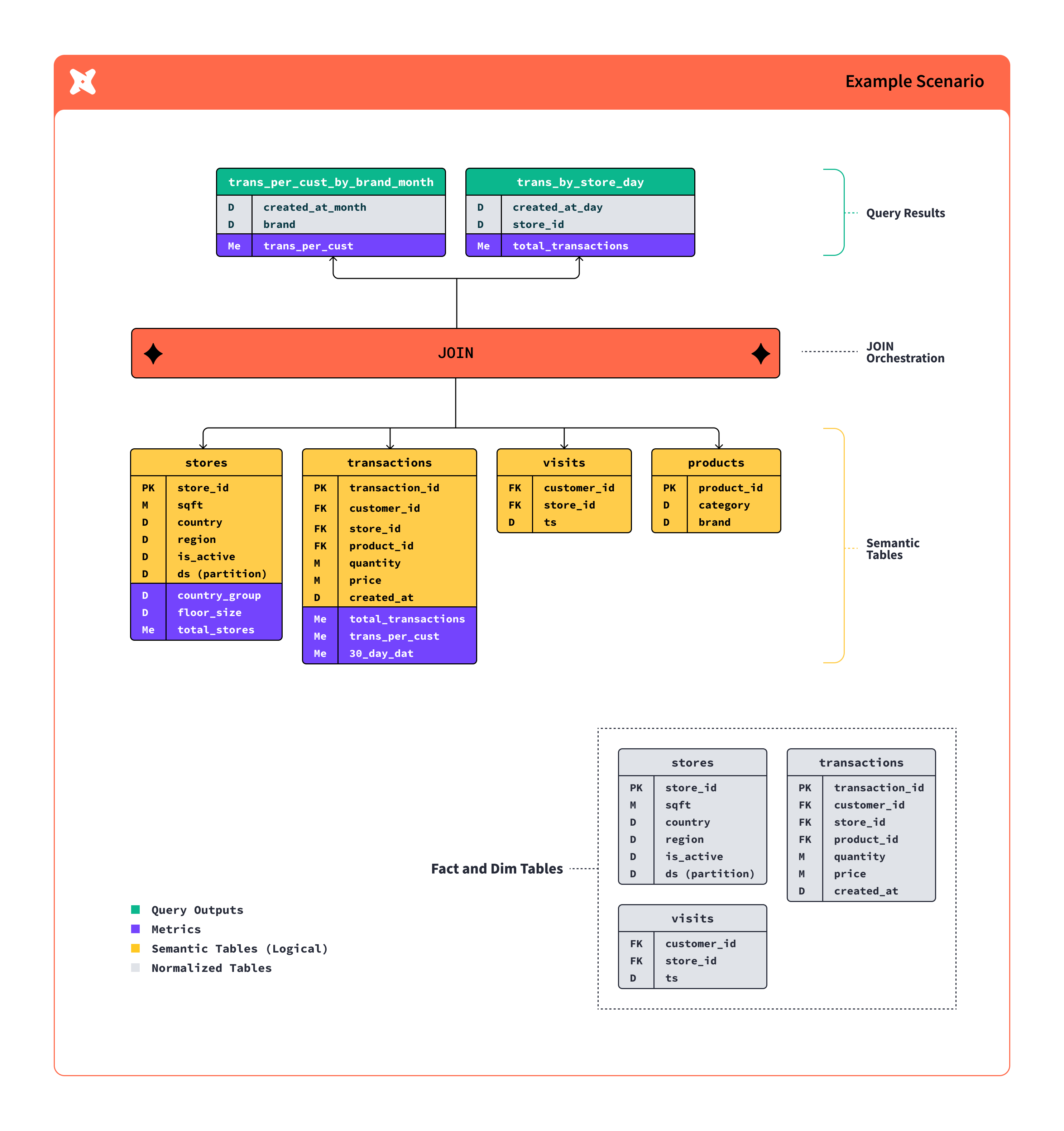Build your metrics
Use MetricFlow in dbt to centrally define your metrics. As a key component of the Semantic Layer, MetricFlow is responsible for SQL query construction and defining specifications for dbt semantic models and metrics. It uses familiar constructs like semantic models and metrics to avoid duplicative coding, optimize your development workflow, ensure data governance for company metrics, and guarantee consistency for data consumers.
MetricFlow allows you to:
- Intuitively define metrics in your dbt project
- Develop from your preferred environment, whether that's the dbt CLI, Studio IDE, or dbt Core
- Use MetricFlow commands to query and test those metrics in your development environment
- Harness the true magic of the universal Semantic Layer and dynamically query these metrics in downstream tools (Available for dbt Starter, Enterprise, or Enterprise+ accounts only).
Related docs
- Quickstart guide with the Semantic Layer
- The Semantic Layer: what's next blog
- Semantic Layer on-demand course
- Semantic Layer FAQs
Was this page helpful?
This site is protected by reCAPTCHA and the Google Privacy Policy and Terms of Service apply.
0
